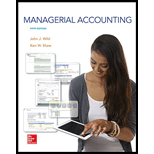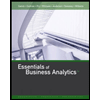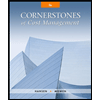
Concept explainers
Concept introduction:
Break-Even Point: The level of sales at which profits are zero refers to break-even point. In other words, it is the point where total revenue equals total cost and total contribution margin equals total fixed cost.
Requirement 1a:
To compute:
The break-even point in sales units for Praveen Co. that manufactures and markets a number of rope products.
Concept introduction:
Break-Even Point: The level of sales at which profits are zero refers to break-even point. In other words, it is the point where total revenue equals total cost and total contribution margin equals total fixed cost.
Requirement 1b:
To compute:
The break-even point in sales dollars for Praveen Co. that manufactures and markets a number of rope products.
Concept introduction:
Break-Even Point: The level of sales at which profits are zero refers to break-even point. In other words, it is the point where total revenue equals total cost and total contribution margin equals total fixed cost.
Cost-volume-profit chart: Cost-volume-profit chart is very useful in the planning phase of a business. It involves predicting the volume of sales activity, the costs to be incurred, revenues to be received, and profits to be earned. It is also useful in what-if analysis.
Requirement 2:
To prepare:
The CVP chart for Product XT using 7000 units as the maximum number of sales units on the horizontal axis of the graph and $1, 400, 000 as the maximum dollar amount on the vertical axis.
Concept introduction:
Break-Even Point: The level of sales at which profits are zero refers to break-even point. In other words, it is the point where total revenue equals total cost and total contribution margin equals total fixed cost.
Requirement 3:
To prepare:
The contribution margin income statement showing sales, variable costs and fixed costs for Product XT as the break-even point.
Want to see the full answer?
Check out a sample textbook solution
Chapter 5 Solutions
Managerial Accounting
- Could you help me solve this financial accounting question using appropriate calculation techniques?arrow_forwardgeneral accounting questionarrow_forwardIsabella Traders reported owner’s equity of $84,000 at the beginning of the year and $143,000 at the end of the year. The owner made no additional investments and withdrew $41,000 during the year. The net income for the year amounted to: A) $100,000 B) $96,000 C) $88,000 D) $86,000arrow_forward
 Essentials of Business Analytics (MindTap Course ...StatisticsISBN:9781305627734Author:Jeffrey D. Camm, James J. Cochran, Michael J. Fry, Jeffrey W. Ohlmann, David R. AndersonPublisher:Cengage LearningPrinciples of Accounting Volume 2AccountingISBN:9781947172609Author:OpenStaxPublisher:OpenStax College
Essentials of Business Analytics (MindTap Course ...StatisticsISBN:9781305627734Author:Jeffrey D. Camm, James J. Cochran, Michael J. Fry, Jeffrey W. Ohlmann, David R. AndersonPublisher:Cengage LearningPrinciples of Accounting Volume 2AccountingISBN:9781947172609Author:OpenStaxPublisher:OpenStax College Cornerstones of Cost Management (Cornerstones Ser...AccountingISBN:9781305970663Author:Don R. Hansen, Maryanne M. MowenPublisher:Cengage Learning
Cornerstones of Cost Management (Cornerstones Ser...AccountingISBN:9781305970663Author:Don R. Hansen, Maryanne M. MowenPublisher:Cengage Learning Managerial Accounting: The Cornerstone of Busines...AccountingISBN:9781337115773Author:Maryanne M. Mowen, Don R. Hansen, Dan L. HeitgerPublisher:Cengage Learning
Managerial Accounting: The Cornerstone of Busines...AccountingISBN:9781337115773Author:Maryanne M. Mowen, Don R. Hansen, Dan L. HeitgerPublisher:Cengage Learning



